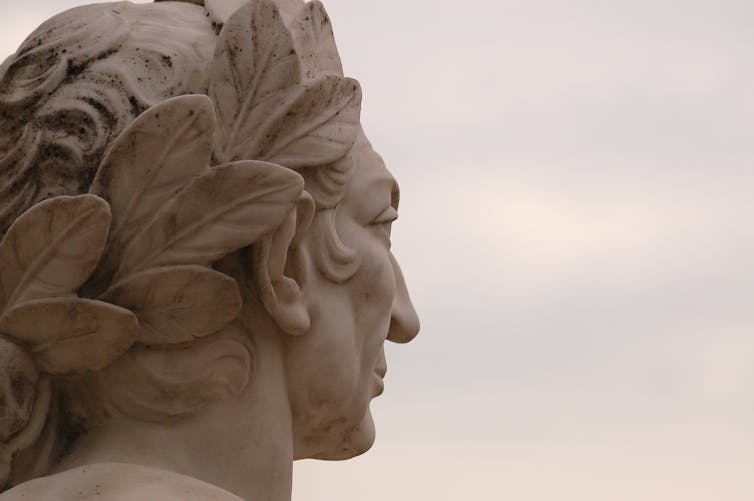The Echoes of Tariffs: Lessons from Ancient Rome’s Economic Struggles
This week, **tariffs are making headlines** as President Donald Trump announced sweeping measures imposing at least **10% tariffs** on a wide array of goods imported into the United States. While some items may face even steeper levies, analysts are expressing **concern** about the potential repercussions, including **inflation** and the looming specter of a recession for the US economy. But as someone who has delved deeply into **Ancient Rome’s economic dynamics**, this situation feels eerily familiar.
Just as modern governments justify tariffs under the guise of revenue generation and protecting local industries, the Romans employed similar strategies. **But the consequences?** They often spiraled into economic turmoil. Let’s embark on a journey through history to explore how **Ancient Roman tariffs** shaped its economy and the lessons that can still resonate today.
Luxury Tariffs: The Crux of Roman Commerce
As the **Roman Empire expanded**, so too did its affluent citizens’ appetite for luxury items from far-off lands such as **Arabia, India, and China**. Exotic goods like **silk, pearls, pepper**, and **incense** became highly sought-after commodities. Interestingly enough, the demand for incense was so insatiable that growers in southern Arabia perfected the art of harvesting it twice yearly!
Roman author Pliny, who met his end in the eruption that engulfed Pompeii, lamented around **70 CE** that an astounding **100 million sesterces** flowed out of the empire each year due to these luxury imports (an amount possibly underestimated). As he noted, **50 million sesterces** of this sum alone were consumed by the trade from India. In fact, evidence from the **Muziris Papyrus**, an Egyptian document, reveals that a single shipload of Indian imports was valued at a staggering **7 million sesterces**!
In one month alone in the second century CE, **Palmyra**, a bustling city in present-day Syria, imported goods worth an astonishing **90 million sesterces**. Moreover, **Julius Caesar** famously gifted his lover, **Servilia**, an exquisite black pearl valued at **6 million sesterces**, showcasing just how lavishly wealth could be displayed.

AdelCorp/Shutterstock
The Financial Strategy Behind Tariffs
In an effort to capture this growing wealth, the Roman government enacted a **25% tariff** on imported goods, known as the **tetarte**. **The aim?** To generate revenue rather than protect local industries; after all, many luxury goods were items that simply couldn’t be sourced locally. **Raw silk, pearls, and gemstones** became critical materials for jewelry and other manufactured items within the empire.
With the overwhelming demand for eastern imports, these tariffs generated eye-watering revenues, estimated to fund roughly **one-third of the military budget** of the empire, as noted in recent studies.
Inflation: A Lesson from the Past
Fast forward to the present, and modern economists echo warnings about the potential inflationary effects of Trump’s tariffs. While **efforts to boost revenue** and encourage domestic production might seem beneficial at first glance, they can prove detrimental to the broader economy. **Pliny** himself lamented the price spikes in essential goods such as incense and pepper, reflecting that the echoes of inflation reverberate through the ages.
Today, central banks attempt to combat inflation by raising interest rates, which ironically leads to reduced economic activity and could consequently diminish tax revenue. Ancient Rome was similarly caught in this inflation trap, particularly during crises that affected soldiers’ pay and morale.
The Rise of Black Markets
Just as tariffs can drive economic innovation, **they also give rise to black markets**. By the time the third century rolled around, traders in Rome had honed their craft of avoiding tariffs, exploiting the empire’s vast landscape and enabling them to bypass checkpoints. This thriving black market blossomed further during the **Crisis of the Third Century**, highlighting how poorly enforced economic policies can leave a significant dent in revenue generation.
While it’s a stretch to pin the **decline of the Roman Empire** solely on high tariffs and economic mismanagement, it’s undeniable that their inflationary pressures weakened the state’s structure. Similarly, the current administration may need to brace for challenges presented by black markets, especially given the extensive length of American borders.
The Diplomatic Implications of Tariffs
Perhaps the greatest risk of imposing these tariffs lies in the **diplomatic tensions** they may incur. While Roman tariffs were not employed as punitive measures against other nations, asserting control and vigor in foreign relations might take a backseat amidst economic policy decisions. The potential resentment among allies, reminiscent of historical tensions, could have far-reaching consequences.
As we observe the modern landscape of economic policies, it’s evident that lessons from **Ancient Rome’s** approach to tariffs provide valuable insights into the complexities of trade, inflation, and the socio-political repercussions of fiscal policies. Though we may be centuries apart in time, the **economic principles** remain strikingly comparable.
**In conclusion**, the age-old dance of tariffs, supply, and demand continues to play a pivotal role in shaping economies—from the crucibles of Ancient Rome to the complexities of today’s global marketplace.






